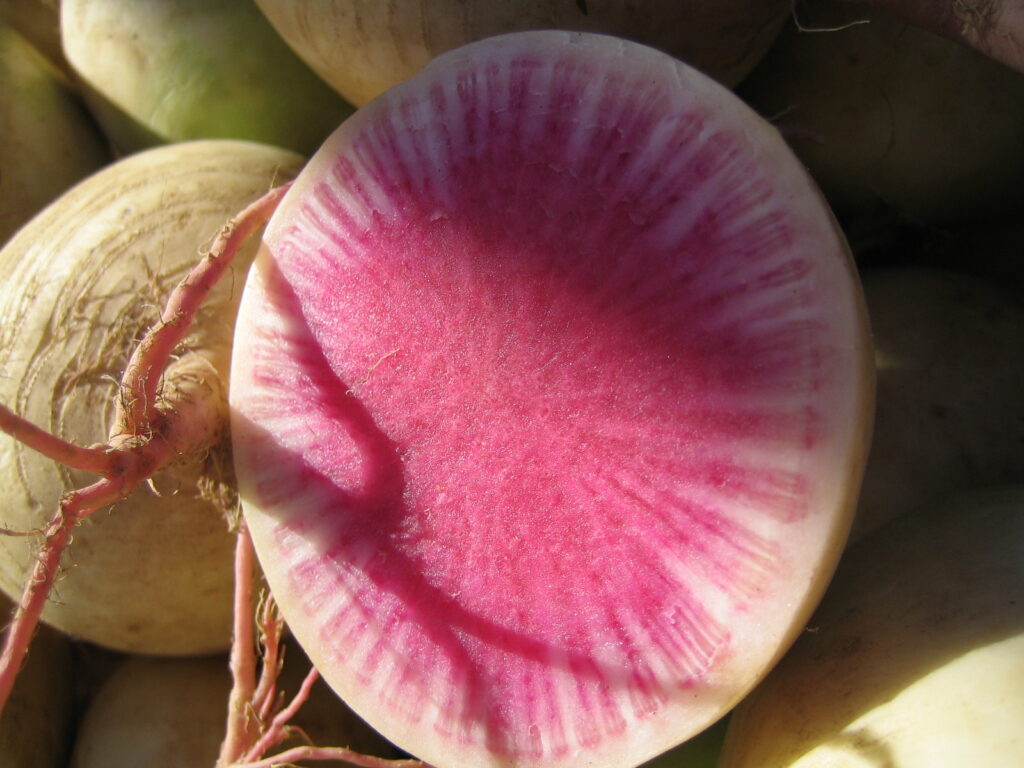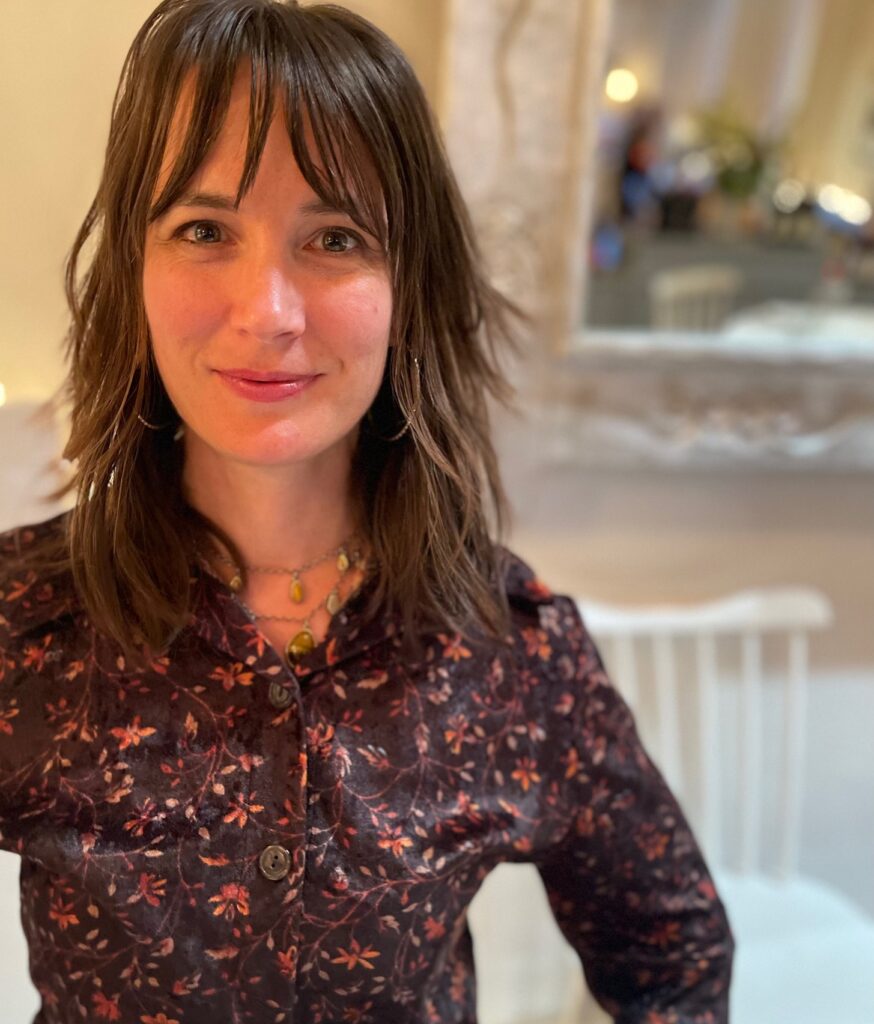
One winter in my early twenties, I coat checked at a French bistro in Chelsea where there were radishes in bowls on the zinc bartop. They were regular radishes, though very big and clean, tops cut off neatly.
Since the radishes had no discernable connection to the restaurant’s name or fare, customers often asked about them. “They look nice,” the busy manager would say. And it was true: they looked good under the dangling Edison lights, a vivid red accent in the dark, cavernous bar, but I thought this answer was incomplete. My job did not always engage me fully, especially since the manager did not want me talking to the customers, lest they be misled into thinking that I could assist them with something other than their coats, so I had time to think about the radishes. I supposed that they also had the virtue of being edible, but not so edible appetites would be ruined by overindulgence; they were inexpensive and required little preparation; and people, I noticed, didn’t ruffle their hands unsanitarily in the bowls of radishes the way they tended to in bowls of nuts. But I also thought about all the other edible, cheap, raw, not-very-filling things that could offer flashes of color and be picked up neatly, one by one–like celery sticks, baby carrots, grape tomatoes, or grapes–and it seemed strange to me that radishes had been settled on, and that it was always radishes.
In that well-heated restaurant, in my black dress and almost-comfortable black boots, my arms freighted with coats, I spent most of my hours going up and down a steep flight of steps to the downstairs coatrack, getting hungrier and hungrier. One night, mid-shift, stomach growling furiously, I palmed a radish and nibbled it in the basement by the coats where no one could see me. I found it bitter and unfulfilling, and yet it was not long before I came to depend on the radishes, sometimes eating them by the handful. As winter wore on, I began to look forward to the invigorating radishes, and to notice how crisp and cool they were and the spice that comes after you swallow them. It seemed to me that radishes were singular, stars among vegetables, among all comestibles, and I no longer questioned, or was anything but grateful for, their spotlit presence in bowls atop the bar.
I was an actress then, not a very successful one, of course, and many industry notables frequented this restaurant. I fantasized that a director or casting director would notice me, out of all the girls like me everywhere in New York, and say, “I have just the role for you! Let me show you to the world!” Even once I’d reconciled myself to the unlikeliness of being plucked out of my particular obscurity and planted in a movie, something that probably happened mainly in movies, I thought someone, just a regular person, might wonder what I was doing here and why I was expending such effort to do the job the back of a chair could do just as well, and see that I had it in me to do more than I was doing, for myself or for the world, though what they might see I didn’t know. But the only times customers made me feel that I did not entirely belong in my occupation was when I lost gloves or scarves or hats. Then I would run back down the stairs, get on my knees, pat the sandy floor under the coatrack, and come back anxiously offering up a great fan of escaped accessories from which the customer could, perhaps, select their missing item? The incredulous scrutiny I got at those moments was simply because I was not very good at my very simple job.
Spring approached with its warmer nights when I stood uselessly watching the people sitting atop the thin coats they’d draped over their barstools. Their backs were to me, but I could see their faces in the big mirror above the bar as they plucked the radishes from the bowls, turned them like jewels between their fingers, and ate them slowly and with great care, as if trying to discover what they were doing there and what, if anything, could be special about them.
 After graduating from Yale, Amber Burke worked as an actress for ten years in New York and L.A. Along the way, she worked in various restaurants, shoe modeled, and played an asthma patient for doctors-in-training.
After graduating from Yale, Amber Burke worked as an actress for ten years in New York and L.A. Along the way, she worked in various restaurants, shoe modeled, and played an asthma patient for doctors-in-training.
She changed course and attended the Johns Hopkins University Writing Seminars; now she teaches writing and yoga at University of New Mexico Taos. You can find her work in swamp pink, The Sun, X-R-A-Y, Yoga International, and many other places, including her website.
Image Credit: Flickr Creative Commons/Brett



Beautiful and clever. When I read the other comments I realized I had thought that the radish story was not about the radishes, but now I know it very much must be, like a waiter recommending what to try more than an artist wondering who she is, like the way Da Vinci’s Last Supper was a map of where to place the silverware. One radish has one calorie. Did you know? It does.
Well written. I enjoyed this story, even though I don’t enjoy radishes, but this story made me want to eat one anyway.
The author is what is special .. not the radishes.. sometimes what is specialist not evident to the casual observer, it takes carful notice.
Nice! Made me want to eat a raddish though i dont really like them